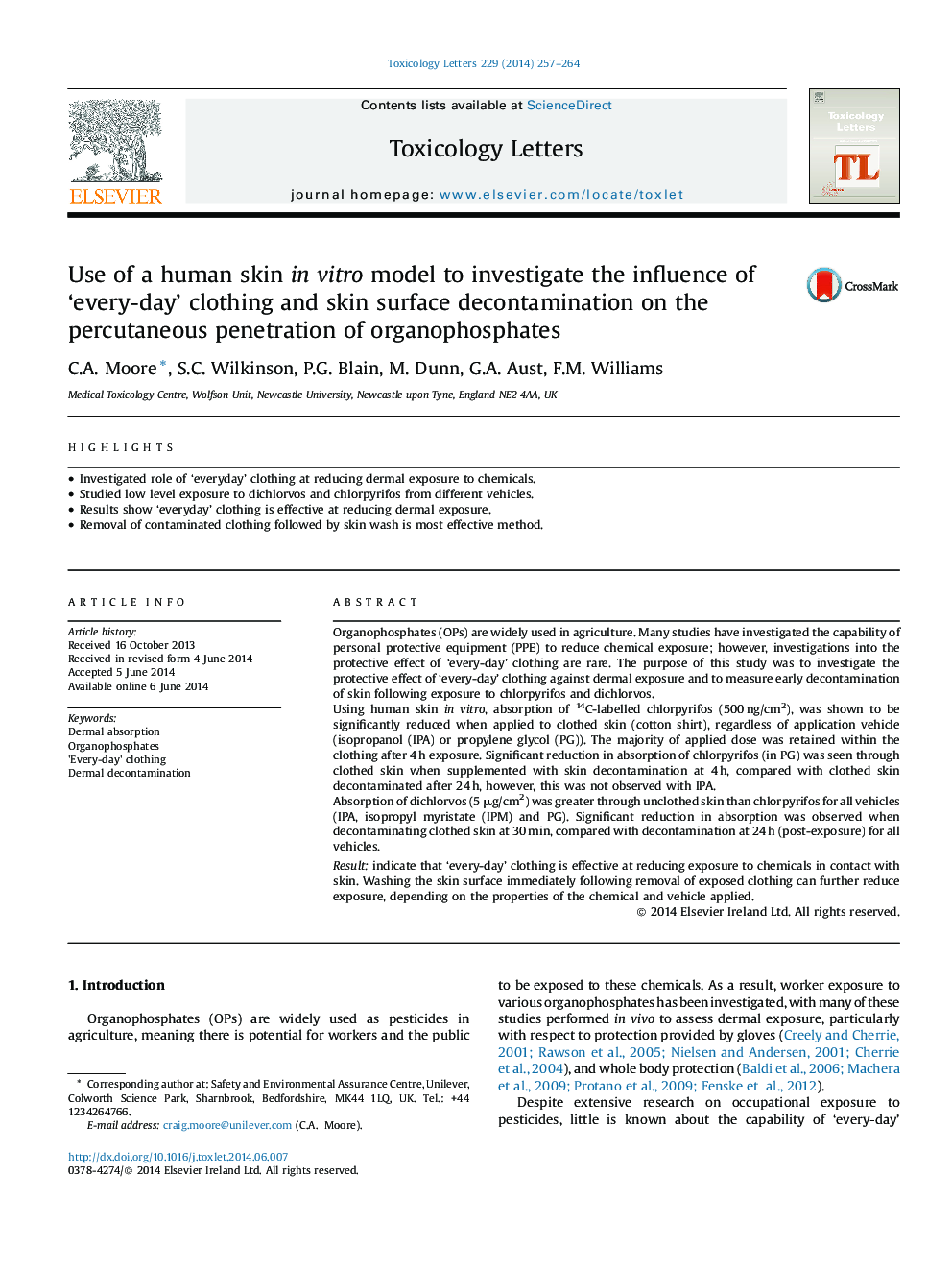| کد مقاله | کد نشریه | سال انتشار | مقاله انگلیسی | نسخه تمام متن |
|---|---|---|---|---|
| 5860287 | 1133172 | 2014 | 8 صفحه PDF | دانلود رایگان |

- Investigated role of 'everyday' clothing at reducing dermal exposure to chemicals.
- Studied low level exposure to dichlorvos and chlorpyrifos from different vehicles.
- Results show 'everyday' clothing is effective at reducing dermal exposure.
- Removal of contaminated clothing followed by skin wash is most effective method.
Organophosphates (OPs) are widely used in agriculture. Many studies have investigated the capability of personal protective equipment (PPE) to reduce chemical exposure; however, investigations into the protective effect of 'every-day' clothing are rare. The purpose of this study was to investigate the protective effect of 'every-day' clothing against dermal exposure and to measure early decontamination of skin following exposure to chlorpyrifos and dichlorvos.Using human skin in vitro, absorption of 14C-labelled chlorpyrifos (500 ng/cm2), was shown to be significantly reduced when applied to clothed skin (cotton shirt), regardless of application vehicle (isopropanol (IPA) or propylene glycol (PG)). The majority of applied dose was retained within the clothing after 4 h exposure. Significant reduction in absorption of chlorpyrifos (in PG) was seen through clothed skin when supplemented with skin decontamination at 4 h, compared with clothed skin decontaminated after 24 h, however, this was not observed with IPA.Absorption of dichlorvos (5 μg/cm2) was greater through unclothed skin than chlorpyrifos for all vehicles (IPA, isopropyl myristate (IPM) and PG). Significant reduction in absorption was observed when decontaminating clothed skin at 30 min, compared with decontamination at 24 h (post-exposure) for all vehicles.Resultindicate that 'every-day' clothing is effective at reducing exposure to chemicals in contact with skin. Washing the skin surface immediately following removal of exposed clothing can further reduce exposure, depending on the properties of the chemical and vehicle applied.
Journal: Toxicology Letters - Volume 229, Issue 1, 17 August 2014, Pages 257-264